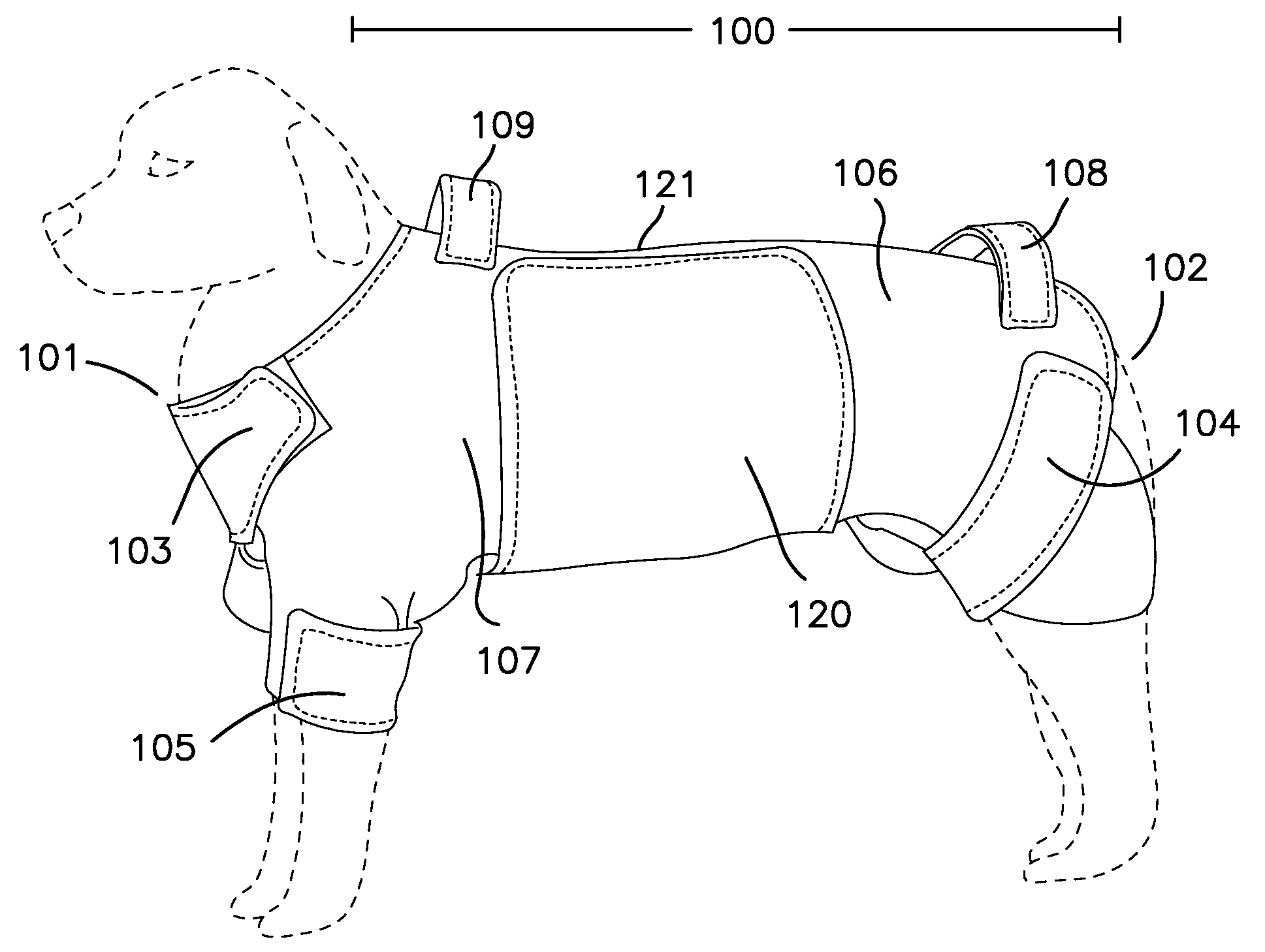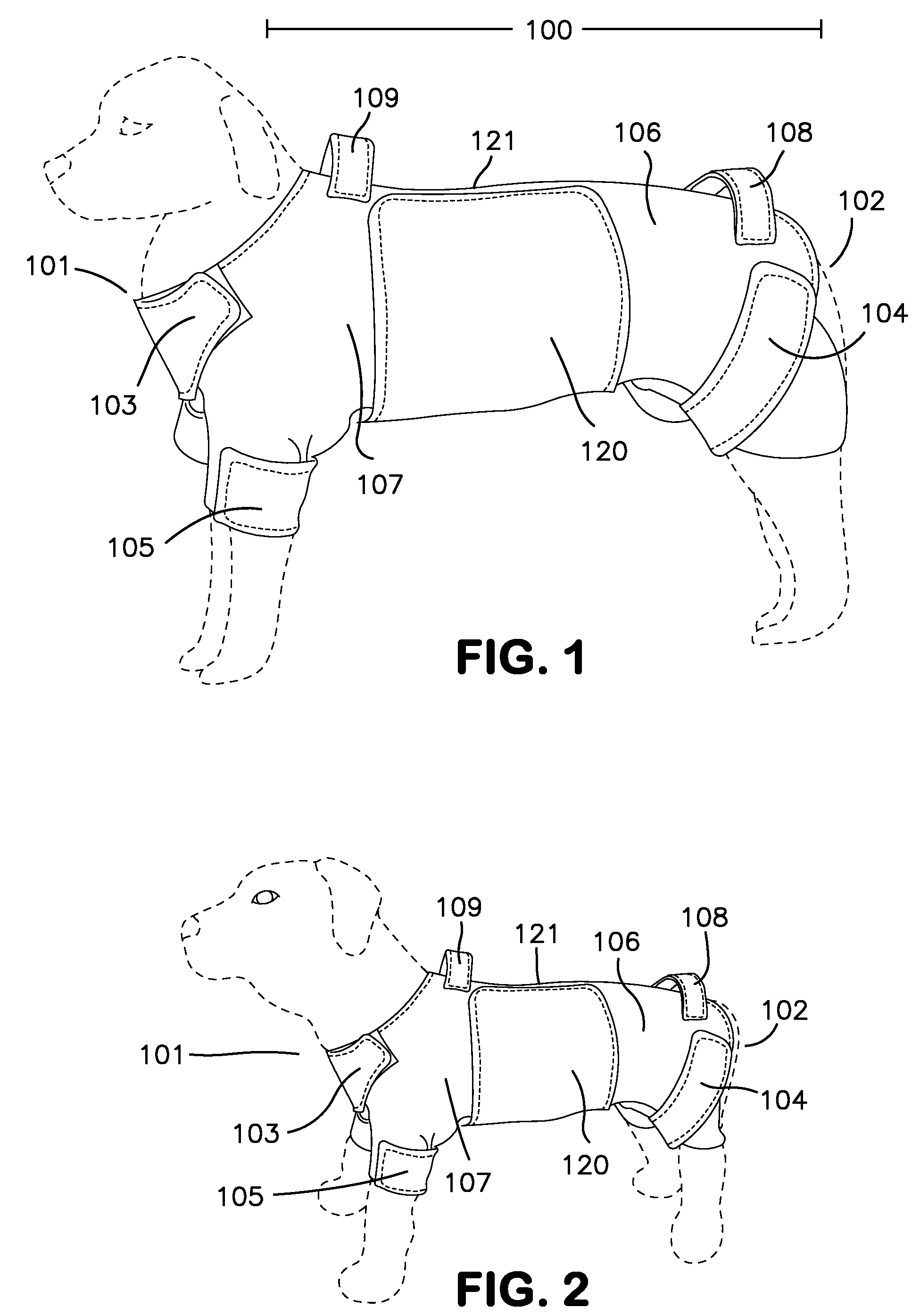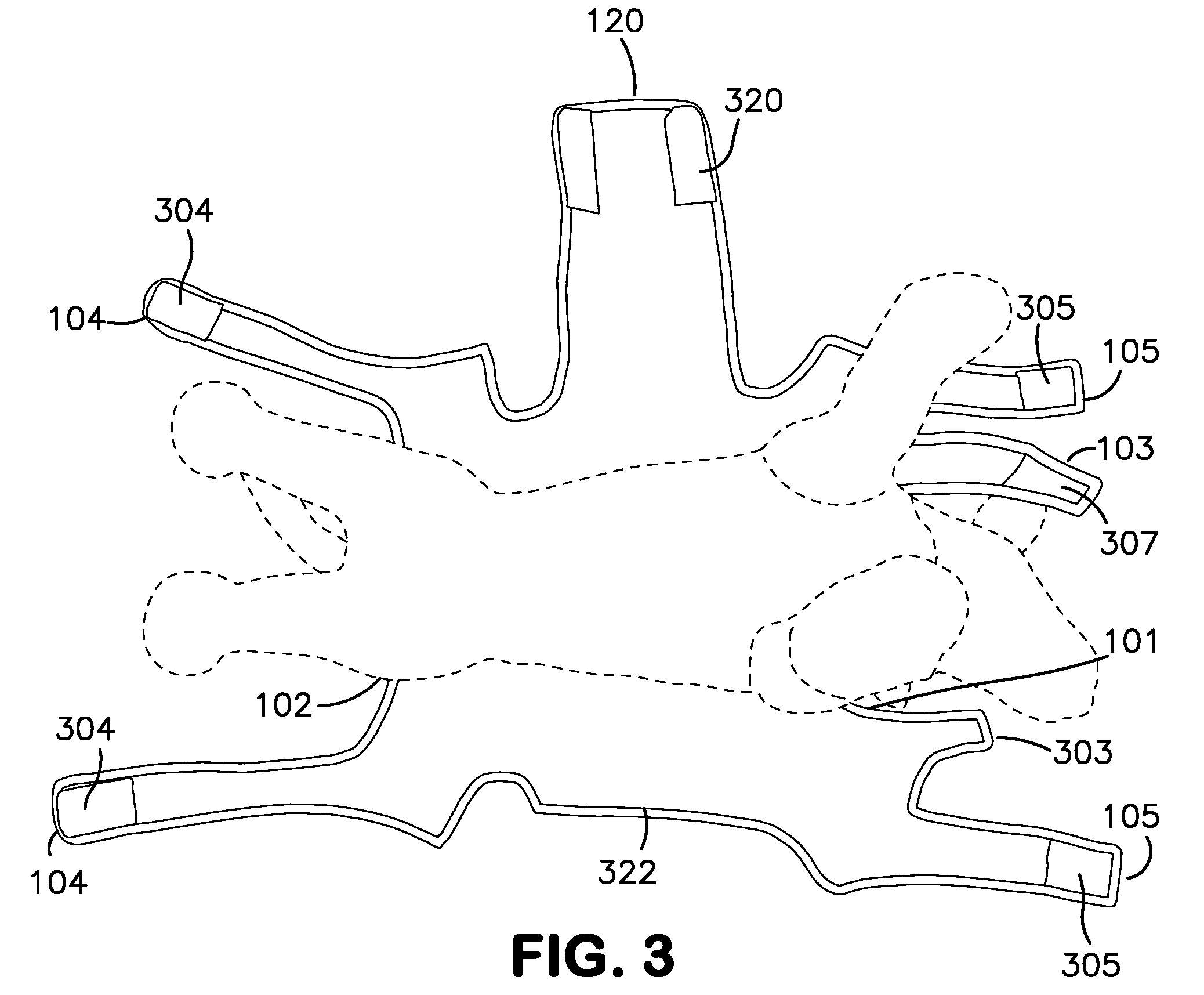Surgical after-care garment
a surgical and after-care technology, applied in the field of animal garments, can solve the problems of reducing mobility and sterility, unable to understand the healing requisites of reducing sterility, and affecting the recovery of wounds, so as to achieve the effect of promoting healing
- Summary
- Abstract
- Description
- Claims
- Application Information
AI Technical Summary
Benefits of technology
Problems solved by technology
Method used
Image
Examples
Embodiment Construction
[0022]The following detailed description may recite various descriptive terms such as horizontal, vertical, top, bottom, upward, downward, left, right, etc., when referring to the exemplary figures, but the present general inventive concept is not limited to any such terms or physical orientations. Such terms are used for convenience of description only, and could be reversed, modified, or interchanged without departing from the broader scope and spirit of the present general inventive concept.
[0023]The present general inventive concept, in some of its embodiments, includes a removable garment for an animal to removeably cover an abdominal wound site. As illustrated in FIGS. 1-7, the present general inventive concept is designed to be worn across the back on an animal and extend from approximately the neck or collar area to just above the tail. The longitudinal center of the garment extends approximately along the spine of the animal, while each edge drapes across each side of the a...
PUM
 Login to View More
Login to View More Abstract
Description
Claims
Application Information
 Login to View More
Login to View More - R&D
- Intellectual Property
- Life Sciences
- Materials
- Tech Scout
- Unparalleled Data Quality
- Higher Quality Content
- 60% Fewer Hallucinations
Browse by: Latest US Patents, China's latest patents, Technical Efficacy Thesaurus, Application Domain, Technology Topic, Popular Technical Reports.
© 2025 PatSnap. All rights reserved.Legal|Privacy policy|Modern Slavery Act Transparency Statement|Sitemap|About US| Contact US: help@patsnap.com



